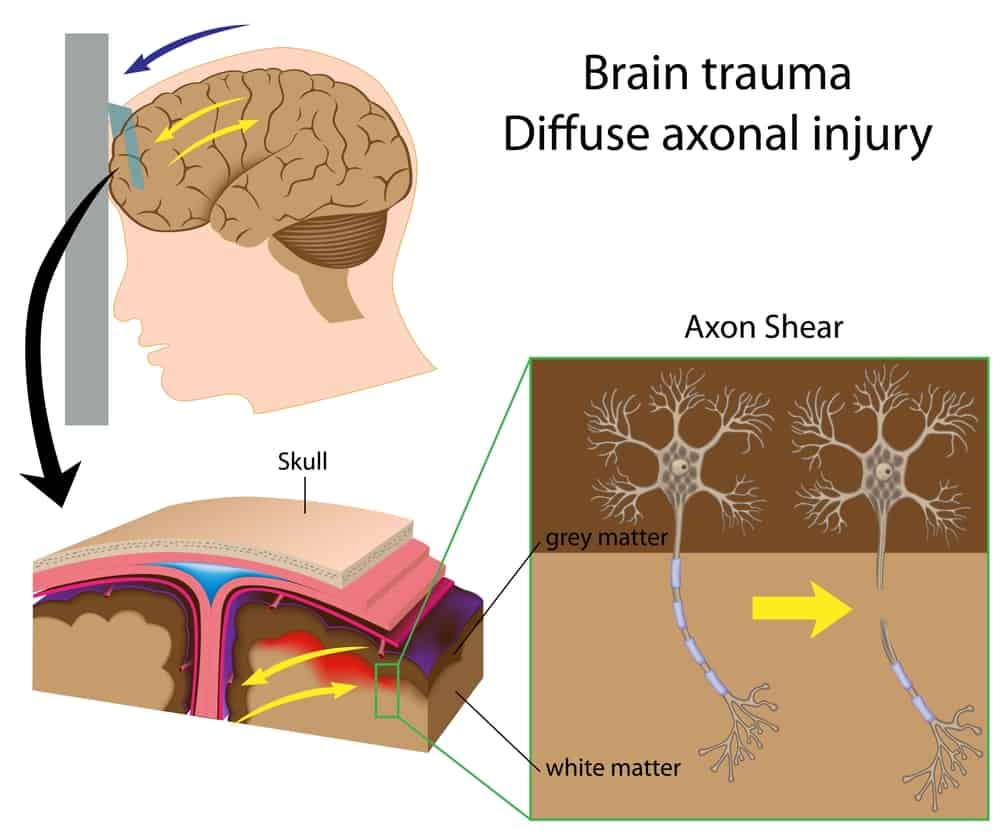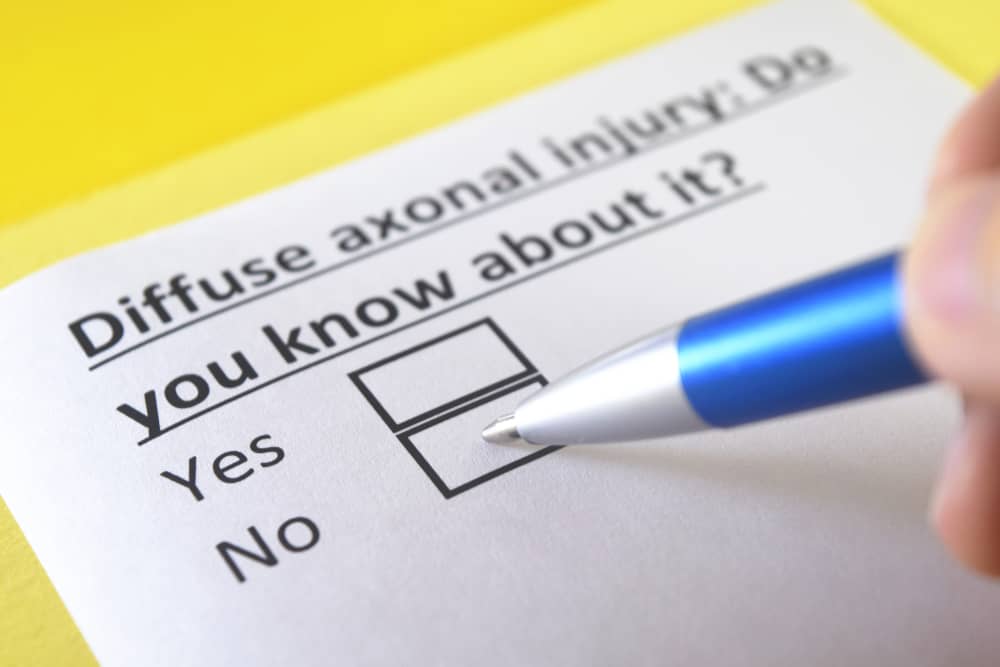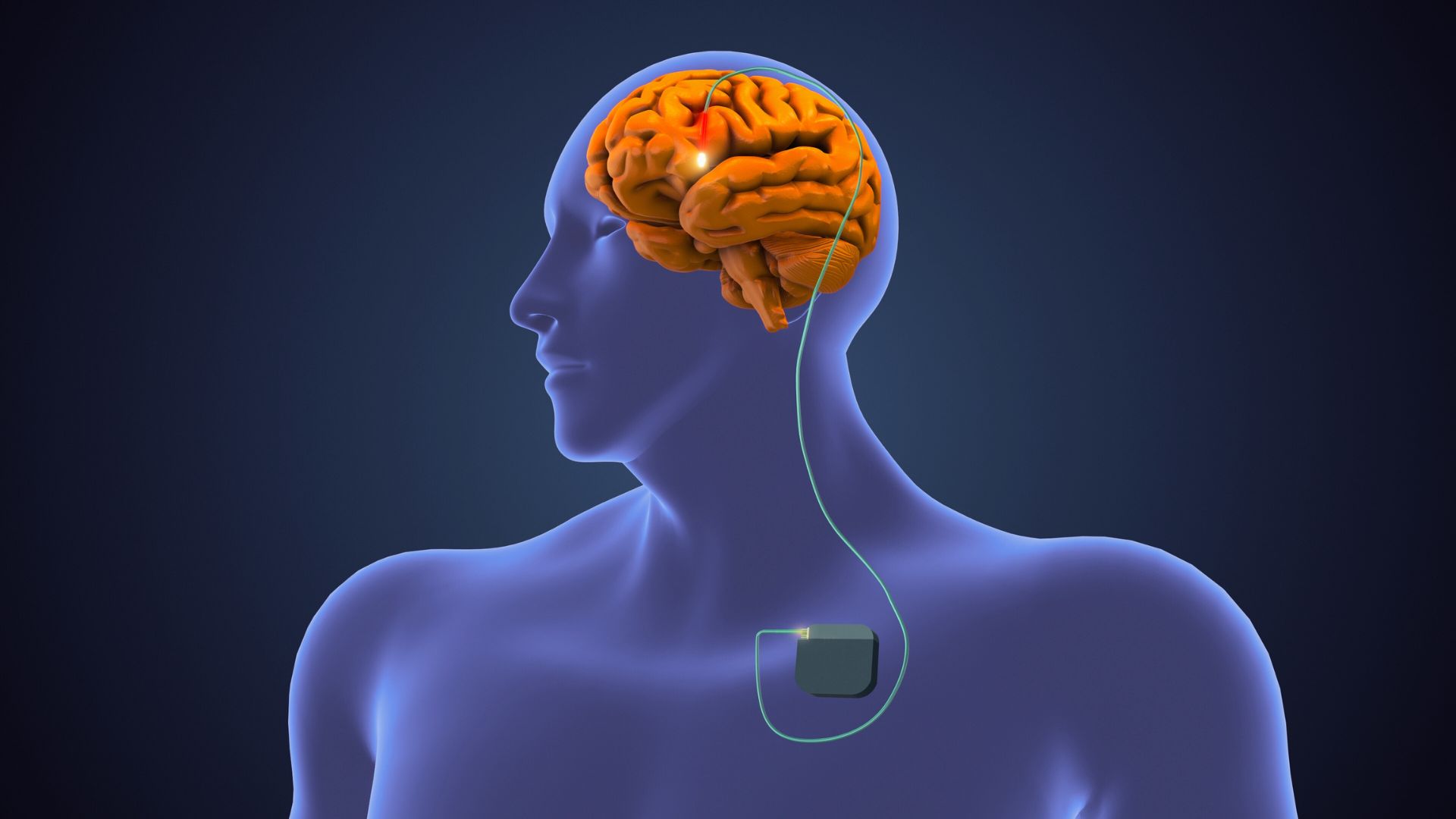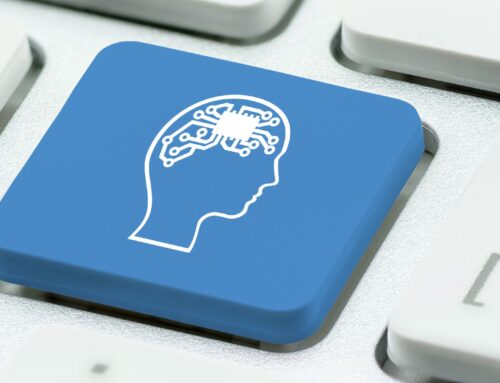Diffuse axonal brain injury is one way to classify types of brain injuries according to the mechanism of the injury or the severity and type of trauma occurring in the brain; the other being focal brain injury.
Traumatic brain injury (TBI) occurs as a result of an external force causing injury to the brain with focal injuries occurring in a specific location and diffuse occurring over a wider area in the brain. TBI is a broad term that describes a vast spectrum of injuries that occur in the brain
The impact of brain injuries is widespread. The advocacy association Brain Injury Canada states that brain injury is the leading cause of death and disability for people under 40. At Propel Physiotherapy, we have extensive experience treating clients living with brain injury. In this article, we take a closer look at the causes, symptoms and treatment of diffuse axonal brain injury.
You may also enjoy reading: My Traumatic Brain Injury Road to Recovery
What is a Diffuse Axonal Brain Injury?
With diffuse axonal injury (DAI), traumatic shearing forces occur to long connecting fibers, called axons, when the brain is rapidly accelerated and decelerated within the hard skull. These forces result in microscopic or gross damage to the white matter of the brain (axons), the parts of neuron cells that transmit information within the nervous system. Different tissue consistencies within the brain, as well as different degrees of fixation of brain parts account for the mechanism and location of diffuse axonal injury [i].

Causes & Symptoms Diffuse Axonal Brain Injury
Diffuse axonal injury is most common in high energy trauma such as high-speed motor vehicle accidents.[ii] It can also occur as the result of falls, sporting accidents, assaults and child abuse such as shaken baby syndrome. This type of brain injury is one of the most devastating types of traumatic brain injury and is a major cause of unconsciousness and persistent vegetative state after severe head trauma.[iii]
Diffuse axonal injury severity can range from mild to severe. While brain function may immediately be impaired, further damage typically occurs hours and days after the event. This secondary injury occurs due to inflammation within the brain resulting in decreased blood flow and oxygen to areas of the brain. This may lead to disconnected neuron cell transmission in the brain which ultimately can lead to cell death.
Diffuse axonal injury can result in a range of physical, cognitive, emotion and behavioural impairments leading to a loss of functional independence. The severity of symptoms can vary with the amount of damage, with mild symptoms including fatigue, trouble sleeping, difficulty concentrating and headaches.
Moderate to severe injuries can lead to physical symptoms such as weakness, balance deficits, hypertonia and decreased coordination. Cognitive deficits such as trouble with memory, attention, and processing can also lead to problems with mood and behaviour. In more severe cases patients are in a coma for a prolonged period of time.
Diffuse Axonal Brain Injury Treatment
At Propel Physiotherapy, our expert team of therapists are highly trained to treat individuals who have suffered the devastating effects of brain injury. Utilizing the principles of neuroplasticity and motor learning, physiotherapists aim to optimize client physical recovery. Treatment can include gait training, postural control and balance training, improving muscle performance, increasing sensory awareness, aerobic training and improving joint mobility.
You may also enjoy: Improving Balance and Posture Makes Daily Activities Safer
It is important to consider that the effects of brain injury are unique to each client and must be considered in treatment approach. Management of brain injury requires appropriate feedback and proper dose and timing of interventions, while simultaneously considering fatigue levels and cognitive impairments of the client.
Our team provides client-centred care while working with other health care professionals such as occupational therapists, speech language pathologists and social workers to implement and work toward client’s individual goals. Shared goal setting is integral in leading physiotherapy interventions toward measurable, meaningful and achievable outcomes, and in providing patient-centred care.
You may also enjoy reading: Meaningful Goals Fuel Motivation
Propel Physiotherapy offers several interventions and equipment that help to optimize neurological recovery including a body weight supported treadmill, Keeogo exoskeleton walking assist device, BrainFX neurofunctional screening tool, as well as accessible exercise equipment.
Propel Physiotherapy is recognized as a leader in the neurological disorder and traumatic brain injury treatment. Contact us today to learn more about our services.
References
[1] Diffuse axonal injuries: pathophysiology and imaging
[2] Diffuse Axonal Injury: Epidemiology, Outcome and Associated Risk Factors
[3] Wasserman J. and Koenigsberg R.A. (2007). Diffuse axonal injury. Emedicine.com.
Written by









